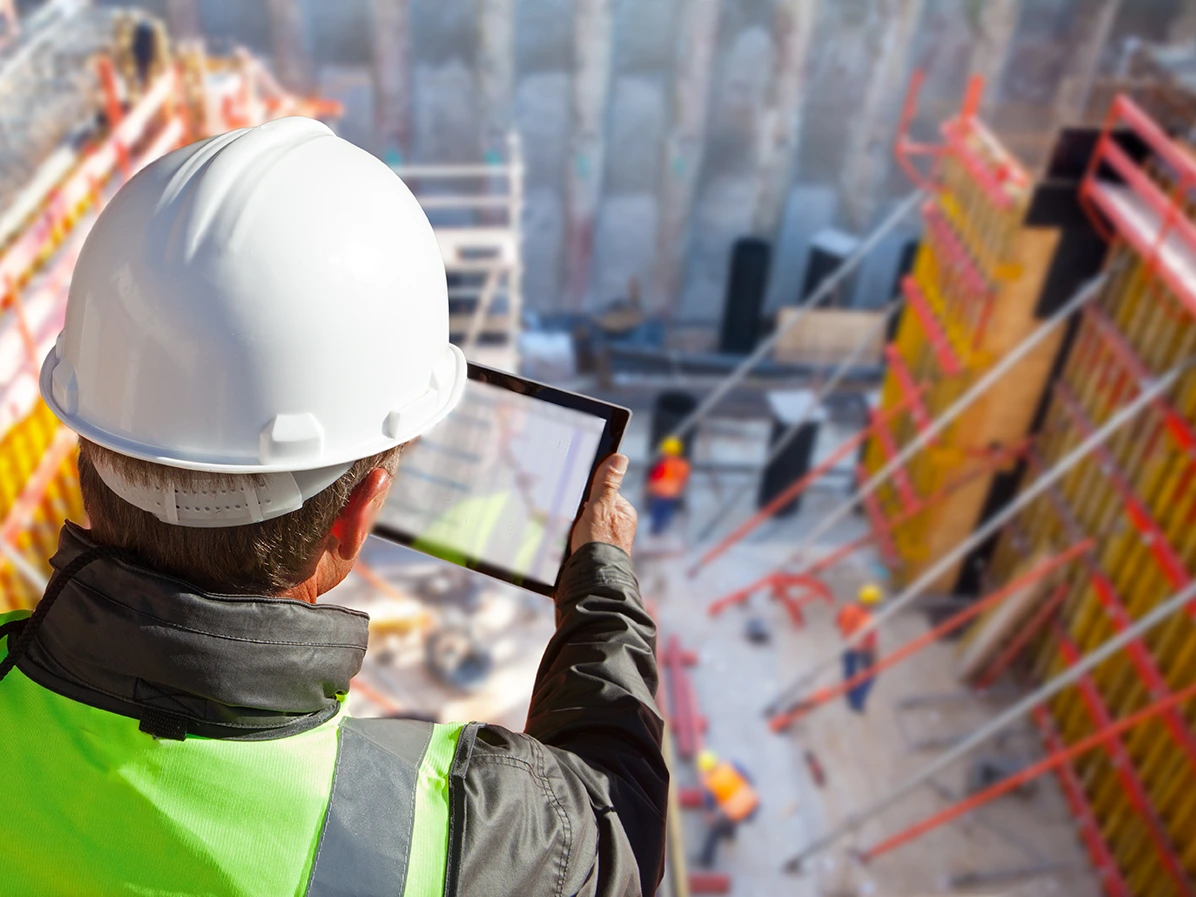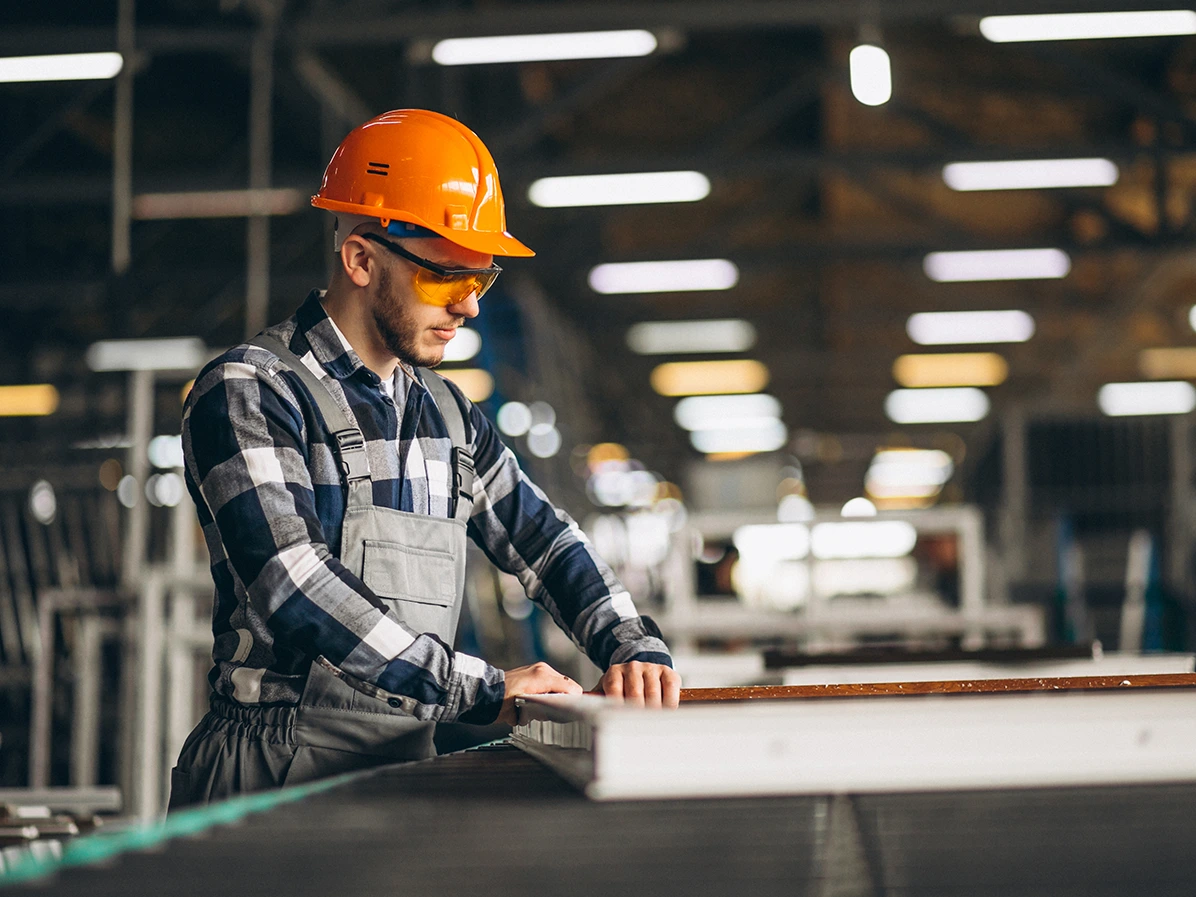Contents
The Importance of Health & Safety in Construction
17 November 2022
Construction is an inherently dangerous profession. From working at heights, to operating heavy machinery and using tools, the tasks undertaken by the typical construction worker are more accident-prone than your average office job, making the monitoring of health and safety issues imperative.
Below you’ll find the most common health and safety hazards in the construction industry, and then the top tips for preventing incidents. This knowledge will help you drill safety into your business culture.
Why is health and safety important in construction?
Incidents occur on construction sites every day. The accident fatality rate is more than double the all-sector average, with a death occurring every 10 minutes on construction sites across the world. In the US, about 20% of worker fatalities in 2019 in private industry were in the construction sector. Less serious accidents also trump other industries. The highest number of non-fatal incidents while at work in the EU in 2019 were observed in construction.
Construction is an industry with a nature that lends itself to injury. Construction –workers spend most of their time either elevated above or underground, around dangerous fumes and a variety of heavy, sharp tools or machinery. Substandard health and safety practices can result in an array of incidents and injuries – with broken bones and burns comprising the most common injuries on construction sites.
Because construction work often occurs in public spaces, like the building of new roads or bridges, buildings or parks, construction site operators have a duty to protect the public. Health and safety best practice recommends that safety professionals consider whether the following hazards exist on their project and determine how to manage them:
-
Falling objects
-
Delivery and other site vehicles
-
Scaffolding and other access equipment
-
Storing and stacking materials
-
Openings and excavations
However, this is far from an exhaustive list. Risks abound on a construction site and if a construction company fails to effectively put health and safety procedures in place, the results can be detrimental. First, ignoring health and safety could result in lost lives. And behind every statistic is a family waiting for their loves one to come home. Second, not placing enough importance on health and safety is damaging to employee retention, as valued employees will start to leave if you’re not doing enough to show that you actually value them. If an incident is high-profile enough, it’ll tarnish the reputation of your company – making it less likely you’ll be able to win more business. Finally, a high rate of incidents also means lost productivity if injured employees need time off, which can slow the project or shut down production altogether.
Common health and safety hazards in the construction industry
There are a host of health and safety hazards in the construction industry, varying in degrees of severity, but all of which should be taken extremely seriously.
According to OSHA the fatal four are:
Falls
As construction workers are often working at height, falls from ladders, scaffolds and roofs are some of the most common causes of injury for construction workers – with almost a third of all construction fatalities in the US in 2020 being fatal falls.
Similarly, with significant outdoor work, employees are often moving across slippery, dirty, sandy and uneven surfaces, increasing the chance of slips, trips and falls.
Struck by objects
The inherent risks in their place of work means that the likelihood of construction workers being injured by moving objects is greatly increased. Things are rarely static on a construction site and with so much heavy machinery on site, such accidents could prove fatal.
Electrocutions
The exposure to electrical hazards, including faulty tools, improper insulation or clumsy wiring, both directly and indirectly, can threaten the health and safety of construction workers.
Caught in/between
Construction workers are working in a potentially hazardous environment with moving vehicles, heavy equipment and possibly deep trenches. The risk of becoming caught in or between other objects is greatly increased and the results could be catastrophic.
These are the most potentially hazardous risks to construction workers, but there are plenty of others that should not be overlooked. These include:
Airborne contaminants/material exposure
Excavation and digging result in pollutants and debris, compromising air quality. Harmful airborne substances, such as chemical fumes and dust, often waft around machinery and tools.
Noise exposure
No one’s ever experienced a quiet construction site. Between loud tools like drills, excavators and other heavy machinery, long exposure without ear protection or even short-term exposure to extreme noise could result in long-term hearing loss.
Material handling
Unfortunately, some of the materials used in construction contain dangerous components like asbestos or silica. Workers that are overly exposed to such materials risk being diagnosed with related diseases or developing serious reactions.
Collapses
Construction work often involves having to operate below building sites – meaning falling debris can pose a serious hazard to anyone working underneath. There’s also the risk that the building someone is working on may collapse, causing serious injury or death.
Ergonomic hazards
Working on a construction site can place an employee at risk of a host of ergonomic hazards, posing a threat to their short or long-term health.
Construction workers are often operating powerful equipment or using excessive force, which puts them at increased risk of injury. They may have to adopt awkward postures to lift and move heavy objects, putting them at risk of back or shoulder injury if improper posture or grip is practiced. According to HSE, incidents while handling or lifting objects comprised 19% of all non-fatal workplace injuries in the UK. Moreover, a third of all injuries and illnesses requiring days off work are due to musculoskeletal disorders.
Equally, construction workers may be using vibrating machinery, and prolonged exposure can result in Hand-Arm Vibration Syndrome, a permanent condition impacting the nerves, blood vessels and joints. Similarly, they may experience problems from repetition of the same motion or contact stress from the type of equipment they operate. Some may be working in extreme temperatures day after day, which can seriously threaten their health.
Tips for preventing health and safety incidents in construction
It’s vital to meticulously plan round-the-clock mindfulness. Taking the time to do so will create a positive ripple effect through all aspects of your business – as you’ll not only keep people safe, but also keep your costs down and your production schedule on track.
It's critical to not only understand risks, but also be aware of how to keep incidents at bay:
Train up your employees
Everyone working on a construction site, must be aware of the risks they face and how to mitigate them. Employees need to be provided with enough training so they can develop skills that enable them to not only understand how to spot a hazard, but also effectively communicate that hazard to the rest of their team. They also need to know the specific steps required to carry out different jobs safely and effectively. In the flow learning, where employees can take a short course that reminds them of the do’s and don’ts can further ensure safe operating procedures.
Provide constant access to necessary safety equipment
There’s a whole host of equipment that’ll help mitigate risks facing your workers, including gloves, helmets and goggles. Such tools will not only help them carry out their jobs more safely, but are also likely to boost productivity as they’ll get through tasks more efficiently.
Follow strict safety protocols for more dangerous tasks
For jobs with a slightly higher risk of injury, such as roofing or freight hauling, it’s important to ensure you have safety protocols that workers can follow step-by-step so they can carry out the task confidently. Doing so will ensure that, should an emergency occur, the correct actions will be taken.
Conduct regular risk assessments
Carrying out a risk assessment is one of the most proactive ways of dealing with risk. Doing so enables senior leaders to have total visibility over the existing risks as well as identify unknown hazards across your construction site. Documenting these hazards is a key stepping-stone to figuring out the best actions to take to keep your workplace secure. Many organizations benefit from the use of risk assessment software to help them clearly review identified hazards and ensure easy, instant access to an array of risk assessment documents.
Ensure your incident management process is effective
If you don’t have an effective incident management system in place, your organization will fall behind when it comes to actually dealing with incidents. This means they’ll just keep repeating themselves, losing your company more money and valuable employees. To streamline the reporting process, you can use incident reporting software. This will enable your workers to report hazards and incidents when they spot them, to manage those incidents and then to prevent future occurrences. This software will also give them the opportunity to present hazard or incident data to senior leaders in the form of attractive dashboards, so they can easily spot the problem areas and take action.
Instilling safety into your construction business’ culture
Every company, whatever the industry, should operate in the healthiest, safest manner possible. But rather than creating a safety culture, what you want to do is ensure that health and safety is engrained within your business culture. It’s important to understand that far from being at odds with productivity and profitability, safety can actually enhance these goals – as you’re more likely to retain employees and win over the business with a clean safety record.
Strong leadership is key. By taking an active role in health and safety, senior leaders can truly understand the key issues impacting their construction site and take the most efficient and effective action required. This encourages more noise around health and safety across the whole team. Providing a safe space for employees to talk safety will help them feel more comfortable voicing concerns they may have over a specific element of their work. This means leaders can act faster to either remove them from a task or re-evaluate the safety procedures in place.
It's vital that all employees on a construction site receive consistent safety training that enables them to grow a deep understanding of how to carry out their tasks safely and confidently, as well as how to communicate any hazards they come across to prevent incidents from occurring. Ensuring they can easily access safety information is integral to ensuring that the whole team can stay on top of safety procedures and incidents. In-the-flow learning, integrated into your health and safety software, means workers can scan a QR code with their phone and quickly watch safety videos to ensure they’re aware of the most pressing safety concerns. Even more importantly, that same software should have the capability to post self-created videos that identify best practices to ensure the next person stays safe in the same scenario. This enables the company to act pragmatically when new risks present themselves.
Although paper processes for recording safety data can feel safe, the reality is that human mistakes can have costly consequences. Additionally, the time they take up undoubtedly directs your attention away from what’s happening on the site far longer than desirable. By implementing EHS software, you can access all the necessary safety documentation, such as training manuals and checklists, on the go – ensuring you can focus your attention on-site and respond to issues more quickly.
The importance of safety on a construction site cannot be understated. Besides keeping workers and the general public out of harm, engraining safety into your business culture will also keep your productivity levels high and help you win business in the long term. Safety isn’t just a cost, but an investment into the prosperous future of your business.
Interested to know how EHS software can help make your construction sites safer? Visit our industry page to learn about our construction-industry solutions.

RELATED BLOGS

Building Safer Construction Sites: How to Involve Everyone in Safety Initiatives
3 October 2024 - Team Evotix
Construction sites are inherently dynamic and challenging environments. With heavy materials, large machinery and numerous people working closely, the risks are significant compared to more..

What Is Contractor Safety Management?
21 November 2024 - Team Evotix
Hiring skilled contractors to address workforce gaps is becoming increasingly common. However, as temporary team members, contractors often bring varying levels of skills, qualifications and..

How To Ensure Good Health And Safety Practices In Manufacturing
1 December 2022 - Team Evotix
The manufacturing industry is an economic powerhouse in the U.S. It’s responsible for producing 20 percent of the nation’s capital investment, 35 percent of productivity growth, 60 percent of..
